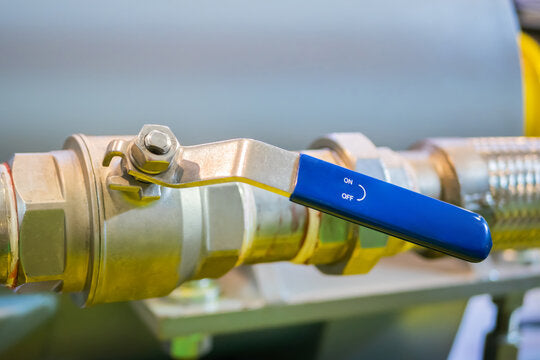
What Are Ball Valves?
Share
According to the report of Next Move Strategy Consulting, the Ball Valve Market is predicted to reach USD 17.27 billion by 2030 with a CAGR of 4.1% from 2024-2030.
The Ball Valve is a quarter‑turn valve that uses a hollow, perforated and pivoting ball to control flow. When the bore (hole) of the ball is aligned with the pipeline, fluid passes freely; when the ball is rotated 90°, flow is blocked.
Download Your Free Sample Here
Summary:
Ball valves offer tight shut‑off, simple operation and low maintenance.
- Tight shut‑off: Metal‑to‑metal or soft‑seat sealing provides bubble‑tight performance.
- Ease of operation: A simple 90° turn opens or closes the valve completely.
- Low maintenance: Fewer moving parts reduce wear and downtime.
How Do Ball Valves Work?
Ball valves rely on a rotating ball within a valve body and seats that seal around the ball.
Summary:
The quarter‑turn motion and sealed seats are key to a ball valve’s reliability.
- Rotating the handle 90° moves the bore into or out of line with the flow path.
- Seats conform to the ball to prevent leakage.
What Are the Latest Standards and Regulations Affecting Ball Valves in Food Processing?
According to Pumps and Systems Magazine Report, in late 2023, 3‑A Sanitary Standards, Inc. updated its hygienic standard for ball valves (Standard 68‑01), clarifying that ball valves are clean‑out‑of‑place (COP) only and not clean‑in‑place (CIP) capable. Any valve not marked “COP only” lost its 3‑A certification as of January 2025.
Implications for Food Processors:
- Increased downtime: Daily manual disassembly (COP) replaces automated CIP cycles.
- Compliance risk: Using CIP systems with ball valves now violates 3‑A standards.
- Contamination hazards: Design dead‑spaces can trap product, heightening contamination risk.
Summary:
Food processors must reassess ball‑valve usage in CIP lines and consider CIP‑compatible alternatives such as arc/shutter valves.
- Ball valves now require COP cleaning only, increasing labour and downtime.
- Facilities using ball valves in CIP may face fines or recalls.
How Are Cryogenic Ball Valves Helping Control Fugitive Emissions?
According to insideamericamag Report, in November 2023, Flowserve launched its Worcester® Cryogenic series of quarter‑turn floating ball valves for LNG, hydrogen and other industrial gases. The CF44, CF51 and CF52 models feature a live‑loaded stem seal and high‑strength stem to meet global fire‑safe and fugitive‑emissions standards—including hydrogen testing—while reducing total cost of ownership.
Key Features:
- Live‑loaded stem seal: Maintains consistent sealing force over a wide temperature range.
- Modular bolted bonnet: Simplifies maintenance and reduces spare‑parts inventory.
Summary:
Cryogenic ball valves now address sustainability goals by minimizing greenhouse‑gas leaks in extreme‑temperature services.
- Third‑party testing confirms compliance in hydrogen service.
- Modular design lowers maintenance costs and inventory needs.
Why Are Ball Valves Important?
Ball valves combine versatility, reliability and cost‑efficiency, making them indispensable for:
- Process industries: Oil & gas, chemical, pharmaceutical.
- Cryogenics: LNG, hydrogen and industrial gases.
- Sanitary services: Food, beverage and biotech
Summary:
Their simple operation, tight shut‑off and adaptability secure ball valves as foundational components in fluid‑control systems.
- Quarter‑turn action speeds-up emergency shutdowns.
- Robust construction endures high pressures and temperatures.
Next Steps
To leverage the benefits of modern ball valves in your operations:
- Audit existing valves: Identify applications where CIP‑only valves are required.
- Evaluate hygienic alternatives: Consider arc/shutter or true‑CIP‑rated valves for food service lines.
- Assess fugitive emissions needs: For cryogenic or hydrogen duties, specify live‑loaded‑seal ball valves with ISO 15848‑1 certification.
- Stay informed on regulations: Monitor 3‑An SSI updates and international emission standards.
- Explore strategic partnerships: Engage OEMs or technology providers to access advanced valve solutions.